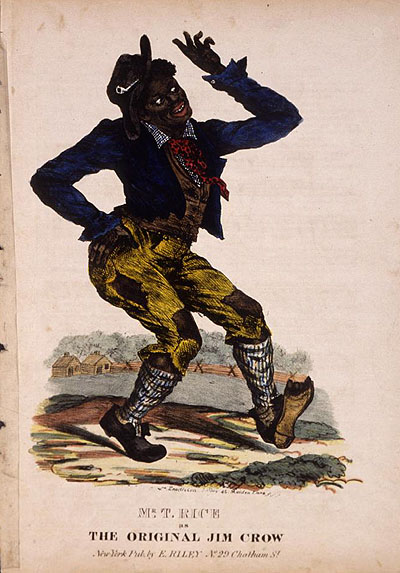Be Seated!

http://thefastertimes.com/newyorktheater/files/2010/03/scottsboroboys2.jpg

Jim Crow representation
http://upload.wikimedia.org/wikipedia/commons/8/86/Jimcrow.jpg
In 1932, Rosa Parks married Raymond Parks and the two join the campaign to save the Scottsboro Boys; in 1955, she was arrested for refusing to move on the bus. Her peaceful resistance on that night is widely taught, but the Scottsboro Boys are hardly as much of a household name. In a rather bright, humorous (though darkly humorous) manner, “The Scottsboro Boys” tells an important and regrettable case in history. Told in the minstrel tradition, “Scottsboro” is at once funny, offensive, and a reminder of the past. A colorful set, vivid costuming, a simple but intricate set, an incredibly engaging, talented cast, the political undertones, and to some extent the offensiveness of the play made “Scottsboro” captivating and entertaining yet with a bit of bite.
The presentation of the story of a rape case between a white woman’s claim, black defendants, and a white jury in the South is reminiscent of Harper Lee’s To Kill A Mockingbird, yet the mocking minstrelsy, vivid color, and bright lighting kept the play feeling modern. The simple set with interlocking chairs representing the prison, the train, and various other sets was genius. I especially liked the train scene where the tambourines were used as the wheels of the train, and the actors made it look like the train was moving. So many people moving on such a makeshift structure made it so surprising that is was so sturdy when actors jumped on top of it.
The song in that scene was so catchy; “commencing in Chattanooga…” is still playing in my head. Yet the bubbly tunes come in sharp contrast to the subject matter. Cheery music including tambourines, memorable beats, and the occasional beat from tap dancing provided an irresistible upbeat feeling. The contrast was most distinct during the electric chair scene; although the chair signifies imminent death, the movement and staging seemed to suggest nothing of the sort.
The most memorable performance came from Joshua Henry who portrayed Haywood Patterson who in the play was put into solitary confinement and died in prison. He provided strength and dynamism in his dance movement, acting, voice, and simple presence. Other memorable performances include the youngest in the cast, Julius Thomas III, who portrayed Roy Wright, Colman Domingo and Forrest McClendon who portrayed the offensively funny and changing roles of Mr. Bones and Mr. Tambo.
It is a shame that the show is closing on December 12 at a 5 million dollar loss, though the producers contend it is due to the economy more than the protests. “The Scottsboro Boys” keeps present episodes in our history that we might like to forget, but question society today. Although spoken by the interlocutor (played by John Cullum), his message resonates: “Gentlemen, be seated.”

